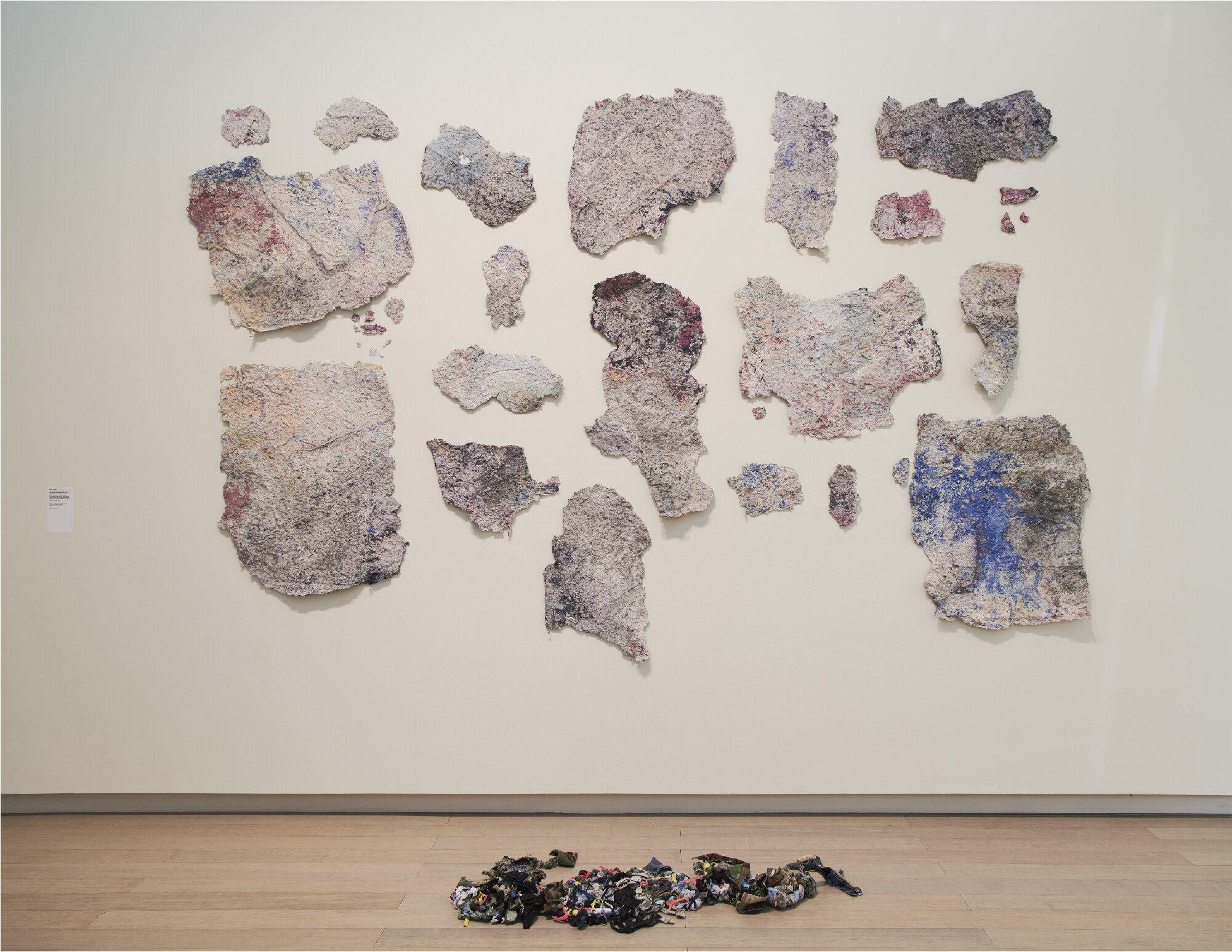Jenn Hassin
Bio: Jenn Hassin is a Texas-born artist and currently resides in Texas. She attended Columbia University’s Master of Fine Arts program, Class of 2020, with a focus on Social Practice and Installation. She graduated with a degree in Studio Art in 2012 from Saint Edward’s University after serving in the United States Air Force. Hassin’s work has been exhibited at the Pentagon, a Smithsonian curated body of work, as well as in private collections at universities, in patron’s homes, and places of business. She is inspired by research and facts, which then influence her use of materials. A theme in Hassin’s current work is trauma, as well as a major focus on her personal journey about life after rape. Hassin uses found materials, such as clothing, paper, metal, ceramics and glass, that she transforms and manipulates to create a visual for her subject matter, giving the material itself a voice in her art. Hassin currently works out of her studio, where she makes layered conceptual pieces with every intention of making a difference through her art.
Thesis Exhibition



Artist Statement: My work is a labor of love. I collect personal artifacts that have embedded histories of trauma. Sheets from a rape victim, prison uniforms that have been worn down or military gear that has seen more than battle, are examples of what I find in my possession. Once I receive these objects, I have only one rule: to transform them. They become wall hangings, installations and sculptures, thus allowing the matter itself a voice in my art. I explore my beliefs around life after tragedy through community engagement with the intention of collectively transforming trauma.
My intention is to bring communities together to create dialogue and conversation that is meaningful enough to spark discussions, making viewers listen, ponder and become hungry for knowledge. These issues of trauma stem from sexual violence, the injustices within our justice system, physical abuse, death, our military, suicide and mental illness, to name a few.
I am inspired by transformative processes, aiming to be an alchemist, I turn these belongings of traumatic histories into a sort of gold. For example, I use military uniforms, prison uniforms or the clothing one associates with their rape, and reconstruct them into soft paper that I manipulate into large-scale installations. I use cold-hard statistics to discuss facts behind these issues in order to drive home a point, using one unit for each life represented, giving the paper a voice in which it represents. Creating beauty on a one-to-one ratio is important in my art in that it emphasizes the experience of the individual. Pretty portrait or not, I believe we each exist more honestly in our own raw materials. When I can make beauty out of these materials, these raw pieces, I find it to be the fuel to keep making.
L to R: Amalgam (Dimensions Variable, leftover pulp made from clothing with histories of trauma such as death, military action, rape and violence, as well as pulp from paper making workshops with children recycling their own clothing and pulp made out of military uniforms at veteran paper making workshops, Handmade paper pulp, 2020-2021); Seams Intertwined: forever in process, woven through time (48" x 144" x 48", Dimensions Variable, Clothing seams, scissors, 2019-2021 (in process)); Scraps: remnants from making a cup where pulp made from the clothing the artist was raped in was mixed with clay and then cremated in the kiln (Dimensions Variable, Porcelain paper clay, 2020)
